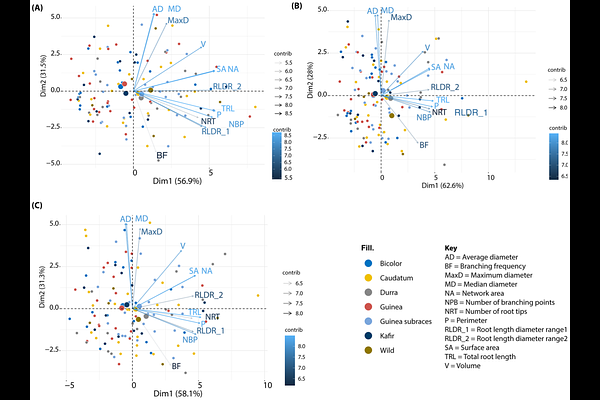Genomics of Root System Architecture Adaptation in Sorghum under Nitrogen and Phosphorus Deficiency

Genomics of Root System Architecture Adaptation in Sorghum under Nitrogen and Phosphorus Deficiency
Magu, J.; Masanga, J.; Muui, C.; Runo, S.
AbstractPlant root systems play a crucial role in water and nutrient uptake, yet the genetic mechanisms underlying root architecture adaptation to environmental stress remain poorly understood, particularly in non-model crops. Here, we investigate the diversity of root system architecture (RSA) in Sorghum bicolor, a climate-resilient cereal, under nitrogen (N) and phosphorus (P) starvation. We used a diverse sorghum reference set, and employed crown root imaging technology to quantify RSA traits and performed a genome-wide association study (GWAS) to identify genetic factors driving these responses. Our analysis revealed significant changes in six RSA traitsaverage root diameter, surface area, volume, total root length, and root length diameter classes (RLDR1 and RLDR2)under N and P starvation. GWAS identified SNPs associated with these traits, pinpointing three candidate genesILR3-like, bHLH, and a LEUNIG homologwith known roles in root growth regulation. These findings provide novel genetic insights into sorghum root adaptation to nutrient limitations and offer potential targets for breeding climate-resilient, resource-efficient crop varieties.